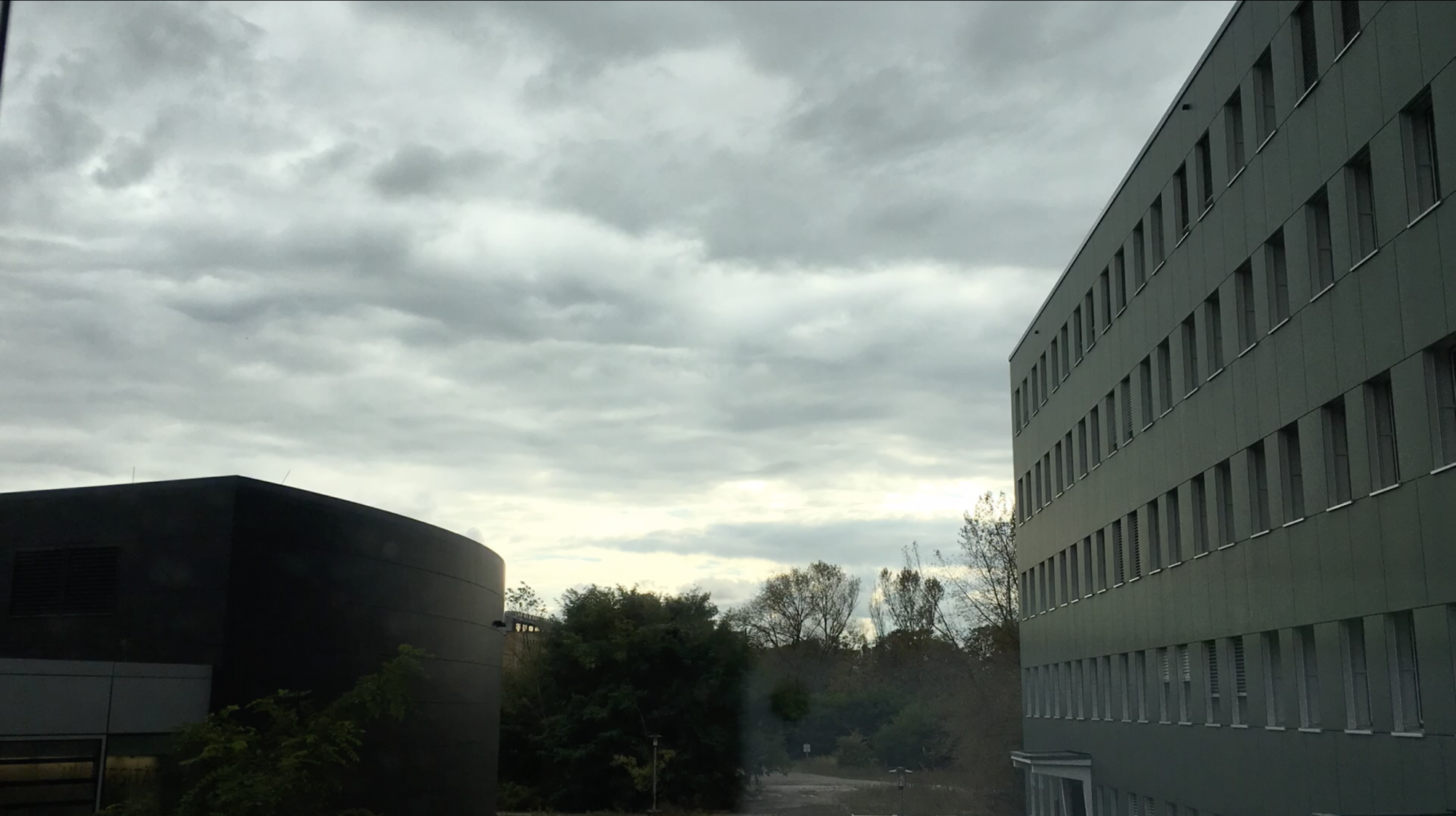Immer tief in der Nacht kommen die Ideen. Die Nacht wäre womöglich auch mal ein lohnenswertes Thema, soll aber hier keine gesteigerte Rolle spielen. Ich lausche der verstörend beruhigenden Stimme Roger Willemsens, der Autor liest sein Buch Der Knacks und beschreibt wortreich, blumig, kunstvoll und präzise das Phänomen des Aufwachsens und Alterns, des Liebens und des Sterbens. Er thematisiert in allen Partituren der deutschen Sprache die Erkenntnis, die in jedermanns und jederfraus Leben einmal kommt, wenn etwas Grundlegendes ausfällt und das Leben „die Richtung ändert“, einfach nie wieder dasselbe sein wird. Er nennt es den Knacks, wir würden es eventuell als biografische Krisen fassbar machen.
Ich lausche Roger Willemsen, aber ich lausche ihm nur teilweise. Oder besser, er ist nur ein Teil des Belauschten. Eigentlich lausche ich einem Bluetooth-Lautsprecher über meinem Bett, der den Ton wiederum vom nahegelegenen iPad drahtlos übermittelt bekommt. Und auf dem iPad läuft die App von Audible, dem Hörbuchhändler im Köcher des Amazon Konzerns. Das Hörbuch habe ich nicht herkömmlich gekauft, es wird mir digital zur Verfügung gestellt. Es gehört mir eigentlich auch nicht, ich bekomme eher so etwas wie eine Konsumerlaubnis. Jeden Monat bekomme ich von Audible ein Guthaben, damit könnte ich mir dann je ein bis zwei Hörbücher einverleiben. Tue ich dies jedoch nicht, dann sammelt sich das Guthaben. Achteinhalb Guthaben sind so zusammen gekommen, einiges davon habe ich nun unlängst in die großartigen Werke Willemsens investiert. Die Entscheidung dazu fällt leicht und schwer zugleich. Leicht, weil ich mich aktuell für Willemsens Lebenswerk interessiere und genug Guthaben gesammelt habe, um einfach alles herunterzuladen was Audible offeriert. Schwer, weil zuvor so viele andere Möglichkeiten die Zeit am Abend zu füllen abgelehnt werden müssen.
Ich könnte mir Aufzeichnungen aus Willemsens Schaffen auf YouTube anschauen oder aber Musik aus meiner Mediathek, also meiner digitalen Musikbibliothek anhören. 19.850 Objekte finden sich dort, die Musik reicht für fast 51 Tage non-stop und da sind die 40 Millionen Songs, die zusätzlich noch der Streamingdienst bereitstellt, nicht mitgerechnet. Dank fast unbegrenzter Speichermöglichkeiten im Netz und günstigem Massenspeicher daheim, kann ich zwischen vielen hundert Stunden Spielfilm und Serien (Netflix und Co. nicht mitgerechnet), zig tausenden Büchern und eBooks und mittlerweile 1200+ digitalen Spielen wählen, die sich über diverse Regalmeter und drei oder vier Onlineanbieter verteilen. Diese in circa einem Vierteljahrhundert gewachsene Medienbibliothek – das ist mir schon seit Jahren klar – werde ich niemals komplett abnutzen können. Es ist eine Sache von Minuten, sich die Gewinner des Hugo Awards, einem Literaturpreis für Science-Fiction, seit 1953 als Paket digital aus dem Netz zu laden, aber eine Sache von Jahren, diese Bücher auch alle zu lesen, wenn man nicht auch noch andere Interessen verfolgen möchte, wie z.B. regelmäßige Erwerbstätigkeit oder Körperhygiene.
Und so habe ich in wenigen Nächten irgendwann in den späten 2000er Jahren eine Bibliothek an englischsprachiger Belletristik angesammelt, auf die vielleicht viele kleine Buchhändler, die es ja angeblich kaum noch gibt, neidisch wären und habe damit doch gleichzeitig besiegelt, dass ich niemals alle diese Werke werde lesen können. Auch nicht vorlesen lassend. Und so scheint die Erkenntnis, dass man von medialen Formen, wie McLuhan es wohl formuliert hätte, umweltet wird, auch mit der Erkenntnis einher zu gehen, dass die über diese Formen verpackten Geschichten durch ihre schiere Mannigfaltigkeit verhindern, dass wir Ihrer noch ernsthaft und verbindlich habhaft werden können. Stattdessen beschäftigen wir uns womöglich lieber mit flüchtigen Formen der Unterhaltung, wie dem Computerspiel, welches seine Kraft erst durch die Interaktivität oder Interpassivität des Spielers entfaltet oder gar dem Let’s Play, welches die schon flüchtige Performanz des digitalen Spieles ergänzt durch eine womöglich noch flüchtigere Performanz des digitalen Vorspielens. Nicht flüchtig in der Form, dass man das mediale Artefakt nicht unbegrenzt zur Verfügung hat, sondern flüchtig weil die Situation der Erfahrung, das Gemeinschaftsgefühl und die Spontaneität in der Rückschau weder greifbar noch vergleichbar authentisch wirken können.
Es sei diese Erkenntnis womöglich das, was einer postmodernen Epiphanie noch am nächsten kommt: Das wir unmittelbar Zugriff haben auf die größte Sammlung an Informationen und Geschichten, die es jemals in der Menschheitsgeschichte gab und doch niemals in der Lage sind, diese moderne Bibliothek von Alexandria auch nur vollständig zu durchschreiten, geschweige denn zu aktualisieren oder internalisieren. Digitale Medienartefakte – und man könnte argumentieren, das diese mittelfristig die Majorität darstellen – bleiben Fragmente, die nur durch kontinuierliche Elektronenaktivität erhalten bleiben können, deren Chance eine Bedeutung zu entfalten im Angesicht der Vermassung von Bedeutungsangeboten aber immer schwächer wird. Es scheint mir dies ein Moment zu sein zu sein, der grundlegend die Tonart des Lebens ändert und dessen Konsequenz letztendlich, wie Willemsen es formulierte, die menschliche Erfahrung „ein wenig dünnflüssiger“ werden lässt: Der digitale Knacks.
Beitragsbild: „Media Library“ von Taras Kalapun via flickr / CC-BY 2.0



